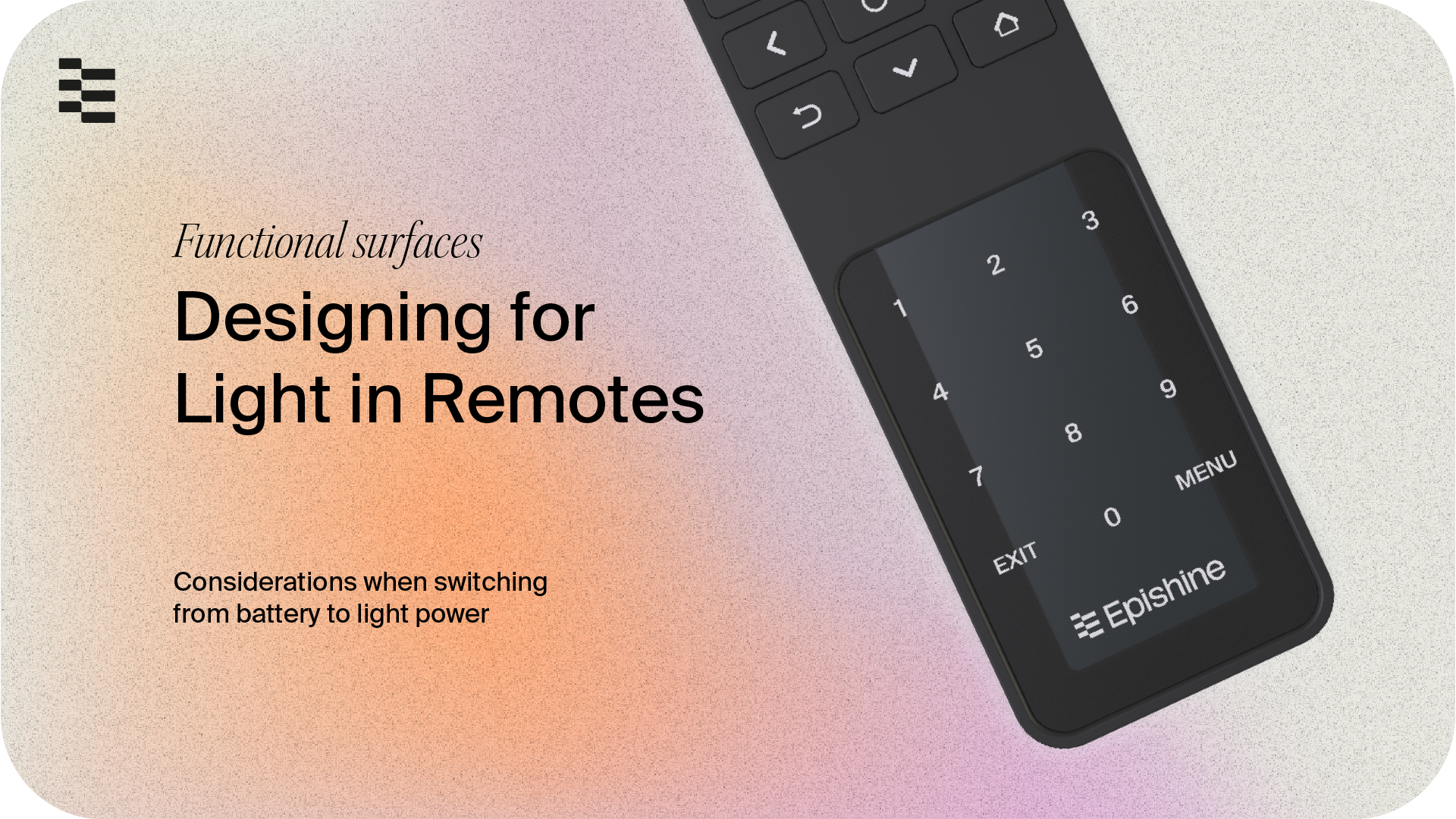
Designing for Light in Remotes
Minimizing the environmental impact and reducing dependency on disposable batteries is a challenge across all industries aiming to cut carbon emissions. In consumer electronics, switching from battery power to light power using indoor solar cells offers a sustainable option to traditional batteries.
In consumer electronics, design and functionality go hand in hand, especially for products like remote controls, which are often on display and must blend into the consumers' home. For manufacturers, maintaining a design that reflects their brand identity is crucial, making design a priority when switching to light powered remotes.
Design Considerations

To effectively meet power requirements while remaining both sleek and functional, careful consideration must be given to the size and placement of the solar cell in the remote. It’s essential that the placement of the cell doesn’t compromise ergonomics, ensuring the remote remains easy to use, functional, and visually appealing.
Epishine’s flexible, ultra-thin solar cells provide numerous integration possibilities. Our solar cells are thin, flexible and scratch-resistant and can be integrated by encasing the buttons with the solar cell on a sliding hatch, positioning the cell on the remote's reverse side to maximize exposure, or utilizing the cell as a functional surface together with the buttons.
Functional Surface
In addition to generating power, Epishine's solar cells can also serve as a functional surface, for example to display information. One way to utilize this is by placing buttons under the solar cell that are activated by pressing down on the cell itself. This integration method ensures no loss of performance or damage to the surface, as proven in separate push tests1. This method also maximizes the solar cell area without having to increase the size of the remote.
This integration is achieved by positioning micro switches behind the solar cell, which is covered with a printed PET foil displaying the remote's icons and numbers. Various design options for the cover foil, such as embossment, can significantly enhance the tactile feel of the buttons.

As consumer electronics continue to evolve, the integration of solar technology not only highlights the potential for renewable energy in everyday products but also demonstrates a commitment to sustainability without compromising design or functionality.
1 The push test is performed using a mechanical finger loaded with a force of 1.2 kg that presses a dome switch 550 000 times on a mockup remote. Results show no performance loss and no visible defects.
